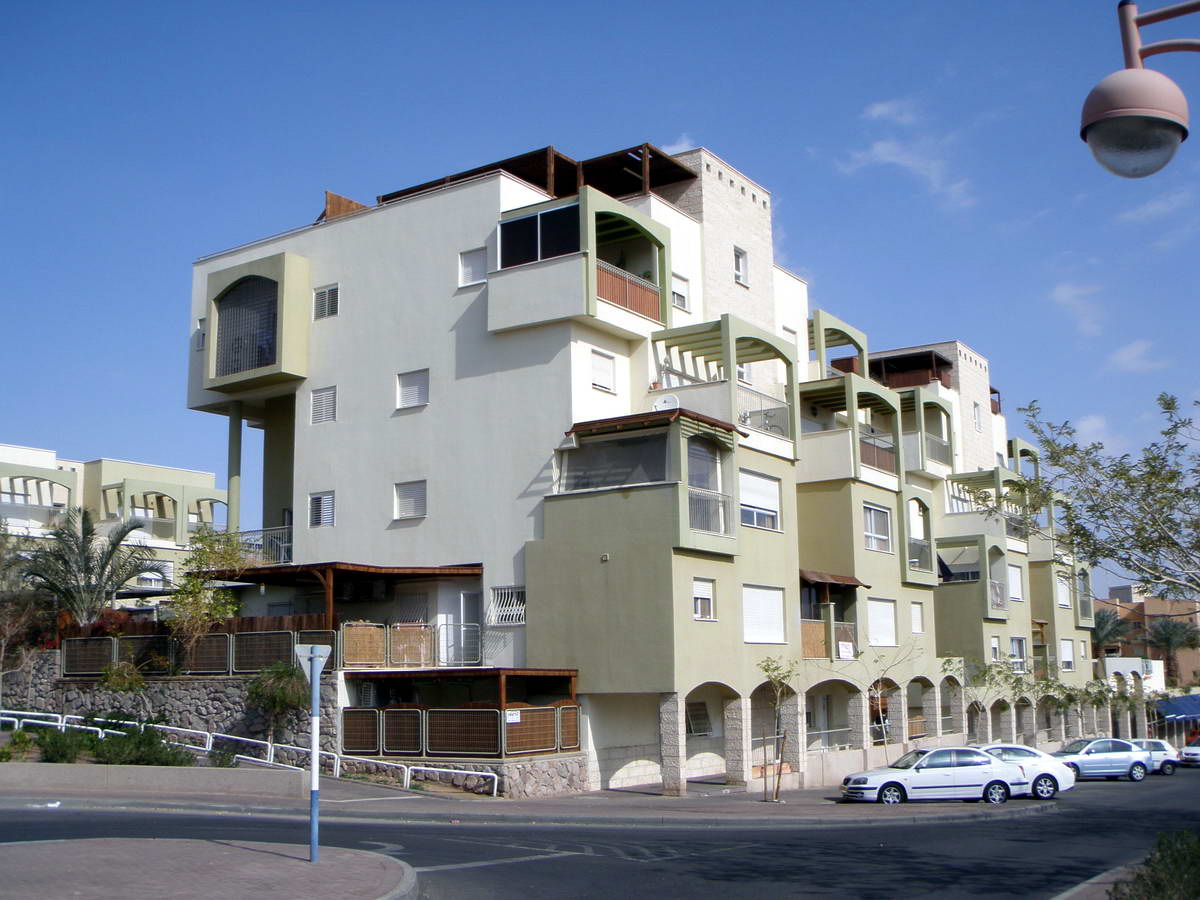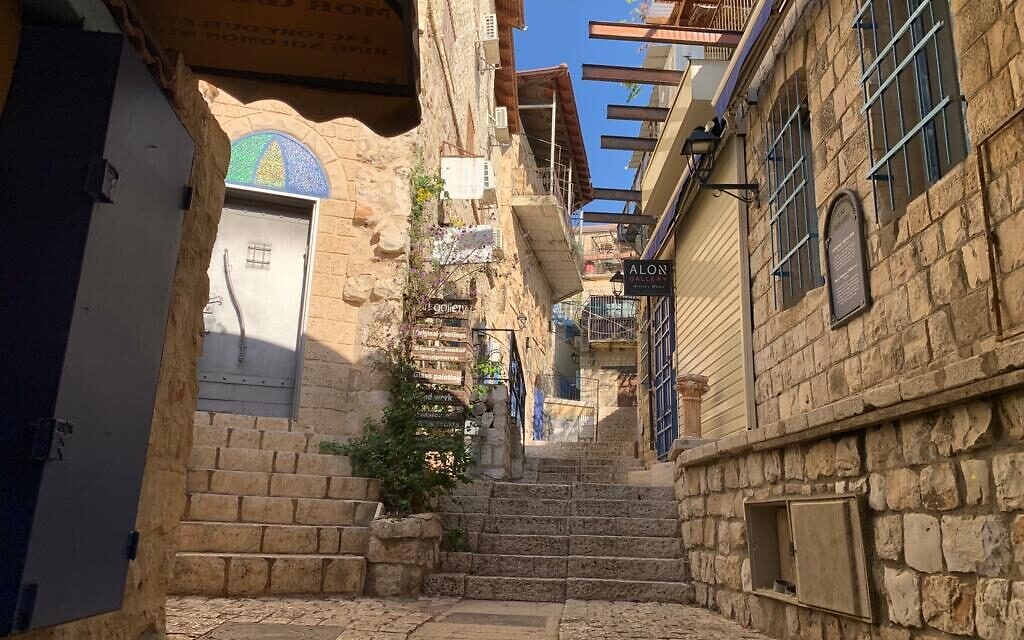I became your enemy because I tell you the truth
Sellers looking to make top dollar and anxious buyers in a low-supply market often grapple with significant differences in asking price and estimated value set by appraiser
Three years ago, Miriam Levy (a pseudonym) made a life-changing decision. She and her family left Canada for Israel and headed for her dream location, the northern city of Safed, to make their new home. The family rented initially and started looking to purchase a place of their own.
In the bank was the cash from the sale of their Canadian home, and both Miriam and her husband quickly found new work in Israel that allowed them to continue saving.
Last year, the Levys felt ready to put down roots and wanted to do so in Safed’s Old City, a vibrant center with unique properties, albeit a limited number. After a long search, they found one place but when it came time to sign the contract, the seller suddenly disappeared. The second place they found had some insurmountable legal issues. The seller in the third place asked for more money at the last minute, and they walked away.
Then came the fourth property. It was smaller than they ideally wanted, but it came with land that could be used to build an extension. The asking price was NIS 4 million ($1.15 million) which was reasonable and affordable for them. They could use their savings as a down payment, and take a 70 percent loan that could be financed from their earnings. But the loan was dependent on a valuation from an independent appraisal.
A gap between the asking price and the value, as determined by an appraiser, is not unusual, particularly in an overheated market with inadequate supply and soaring demand. But in this case, the appraiser’s work came up short by NIS 1 million ($283,079) — or around $3,000 per square meter ($279 per square foot).
This scale of differential raises red flags and means that banks and other lending institutions are likely to refuse a mortgage on the property. The appraisal gaps are considered one reason that mortgage lending has been falling for the past several months.
The situation put the Levys in a bind faced by many potential buyers who look for a home on the higher end of their budget. Having gathered together the money for a 25% down payment (the minimum required in most cases) and money to cover the costs of purchase (agent fees, tax, legal fees, moving costs), they are dependent on getting a mortgage for the remaining 75% of the property sale value and plan to pay their mortgage over the next 20-30 years out of monthly income.
But banks will only lend on the value determined by the appraiser. This does take account of the actual selling prices but places more weight on concrete factors such as the quality of materials, and the dimensions of the building. A professional appraisal will not ignore “potential value”, but it will not price a property based on what might happen to it in the future. In a rapidly shifting market, with unique properties coming up, pricing becomes even more difficult and gaps are opening up which act as a serious deterrent to lenders, and wind up blocking potential buyers from purchasing a home.
With prices for housing rising so fast — nearly 20% year-over-year according to the latest report — those with property to sell are banking on high prices, anticipating where the market will go assuming inflation continues to spiral. Owners are willing to wait until a buyer arrives who is willing and able to pay top shekel.
For those buying, if they plan to stay in the property for some time, paying extra at the point of sale is not necessarily a deterrent — they believe that in a short space of time, prices will catch up, and by the time they’ll want to sell the property, it will likely still deliver a substantial profit.
But to lenders, offering substantially more than a property is truly valued is a risky proposition. And if the gap is too big they simply refuse to lend, at least at the levels borrowers need.
In the Levys’ case, a loan for NIS 1 million less than the offering price means they can’t buy the home, unless they can fund the difference from another source, a difficult proposition. Despite making enough afford to make the monthly repayments, they are effectively blocked. And as they continue to hunt for a home, prices are continuing to rise, meaning that soon their down payment may not be enough to buy the kind of property they want.
An appraiser’s work
Becoming an appraiser is a serious feat. Alongside a bachelor’s degree, they are required to undertake a rigorous training program that includes studies in engineering, real estate law, taxes, finance, statistics, and valuation theory, a year as an intern, and finally national exams. Their work falls under the Justice Ministry, which, through the Board of Real Estate Appraisers, has laid out a detailed framework that governs how they should evaluate property for lending purposes (it’s called standard 19).
Ran Neeman has over 25 years of experience in the business and is considered a top expert in the field. In an interview with The Times of Israel, he said the work requires deep knowledge of the market.
“It’s vitally important to arrive at a value based on what the market is saying. Where there are lots of similar properties, it is possible to look at recent transactions of the same size in the same location. But most of the time, each property is unique in some way. One may have a sea view, or more outside space, or it may be built with more expensive materials,” he explained.

Neeman also emphasizes that estimating “potential value” can be part of the job. “We need to look at the land value and scope for improvement, but also to understand the certainty around that: for example, the possibility and the likelihood of re-zoning a piece of land to residential, or the options to improve an apartment through one of the government development schemes [such as Pinui Binui or TAMA 38, or expanding the existing building].”
In Safed, the property Levy had her eye on was indeed unique, and in a very limited market where places do not change hands regularly. Prices are also rising fast in the north — by almost 3 percent a month.
The house had two bedrooms, a living room, and a basement. But the plot was fairly large and the living area could be extended. There’s also the emotional aspect. “There is a magical feeling in the old city – something you can’t place a value on,” Levy said.
Neeman, who is not involved in the Safed appraisal, recognizes the challenges in a market that is fiercely competitive and where both sides — sellers/owners and buyers — have a vested interest.
“We come under tremendous pressure from owners and buyers who need valuations for financing to value property at the highest possible price. Owners want more and more, and with a rapidly moving market, it can be very challenging,” he said.
With an appraiser in the picture, “there’s an inherent tension there.”
“The bank must have an accurate valuation to minimize its lending risk; the owner wants the highest possible valuation, and the appraiser must do their professional duty,” he went on.
The tools used by an appraiser are better than they used to be, he said, but it’s still “a jungle” out there for an appraiser who needs to “evaluate all the available information that can impact pricing.”

Appraisers have access to a set of professional tools, of which prices advertised and paid for properties are just one part. Buyers and sellers only see the asking prices for homes, and in a rapidly changing market, this information does not necessarily give a true insight into what is being paid.
“Buyers and sellers see prices advertised in places like Yad2, and take these prices as being ‘fair value.’ And it is impossible — and incorrect — to put a value on personal factors,” said Neeman, pointing to conveniences and perks like living near relatives or places with sentimental value.
“An appraiser needs to stay objective,” he said. This means staying fixed on the value of the property being appraised with a realistic view of its potential and how much of that is certain enough to include in an appraisal.
The process can be tedious. Each appraiser covers a specific part of the country, with deep expertise in a particular market. They acknowledge advertised home prices, but work with realtors to glean information on how much homes in a given area are actually selling for at that moment in time. They look at the legal definition of the property, the permits that have been granted to it, and their work is detailed and extensive.
“It generally takes five to seven days to produce an appraisal,” Neeman said, “and the report will typically be 15-30 pages long.”
What does a gap tell us?
The Levys’ experience is not unique — although the gap in value in their case is exceptionally large. In property-focused discussion forums, the role of the appraiser can be divisive and buyers say that gaps between the asking price and the appraiser’s view of value are increasingly common. One anonymous home buyer described an experience in which, faced with a problematically large gap, the appraiser offered to do further work for an additional fee on the promise that this could shift the value.
Neeman, however, argues that an appraiser rarely misses something, and therefore needs to resist pressure to “change their mind” in favor of the buyer or seller if the final number is not the one they wanted.

“Only if there is new evidence that changes the picture and was not originally available should a valuer be open to reappraising the price” he said.
For the Levy family in Safed, the difficulties of comparability and market price pressures are clear.
The property tax database, which records the value of actual purchases with some inbuilt time lag, shows that, since early July, just one property in Safed changed hands. The property was a five-bedroom house built in 2010, covering 270 square meters (2,906 square feet) on a total plot of 850 square meters (9,149 square feet). The home was on the outskirts of the city and went for NIS 3.7 million ($1,047,393). It is much bigger and in a very different part of town than the property the Levy family was looking at.
In the Old City of Safed, a quick scan of Yad2 yields two properties: a three-bedroom home, priced at NIS 4.4 million ($1,245,549), with 118 square meters (1,270 square feet) of living accommodation and a 40 square meter yard, and an eight-bedroom property of 260 square meters (2,799 square feet) spread over three floors with a 50-square-meter (538 square feet) garden. The asking price is NIS 5.9 million ($1,670,167). These figures suggest that NIS 4 million for a property of the size that the Levys are looking at is high. In other words, the appraiser is almost certainly right in his estimate of the value of the property.
Levy does not want to walk away, although she and her husband also do not have sufficient funds to put more money into the property. They need that mortgage. Miriam is hopeful that some additional legal documents could add some extra value. And as this is the family’s potential “forever home,” she is confident that even if they overpay slightly it will still be worthwhile.
Michael Loyman


